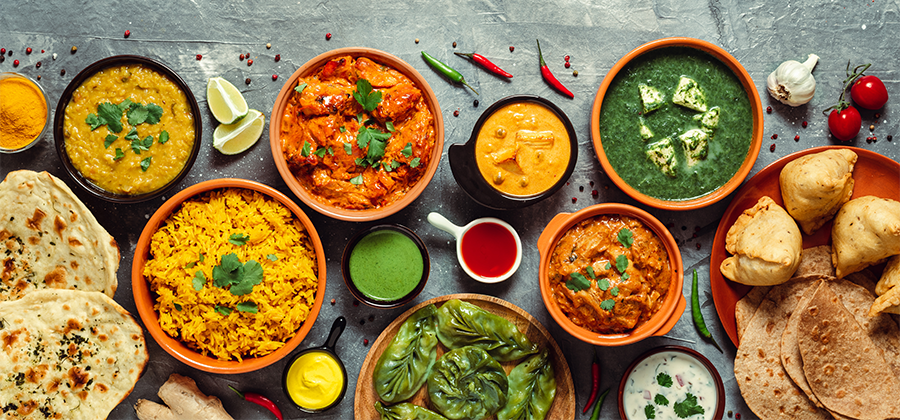Exploring the Rich Flavors of Indian Cuisine
Introduction: Indian cuisine is renowned for its vibrant flavors, diverse spices, and unique cooking techniques. A culinary journey through the vast and varied landscape of Indian food is an experience like no other. This guide aims to provide a comprehensive overview of Indian cuisine, highlighting its distinct regional styles, staple ingredients, and traditional cooking methods. Embark on a gastronomic adventure as we delve into the rich tapestry of flavors that make Indian cuisine a beloved culinary tradition worldwide.
- The Essence of Indian Cuisine: Indian cuisine reflects the country’s rich cultural heritage and geographical diversity. From the aromatic spices of the North to the fiery flavors of the South, each region offers a distinct culinary experience. This section will explore the essence of Indian cuisine and the factors that contribute to its unique character.
- Regional Delicacies: India is a land of culinary treasures, with each state boasting its own array of traditional dishes. In this section, we will explore the diverse regional delicacies that define Indian cuisine. From the hearty Punjabi curries to the fragrant biryanis of Hyderabad, we will take a closer look at the iconic dishes that have become synonymous with different parts of India.
- Staple Ingredients: Spices are the backbone of Indian cuisine, imparting depth and complexity to every dish. This section will provide an overview of the essential spices and ingredients used in Indian cooking. From the pungent turmeric and cumin to the aromatic cardamom and fenugreek, we will discover the key flavors that lend Indian cuisine its signature taste.
- Cooking Techniques: Indian cooking techniques are as diverse as the country itself. From slow-cooking curries to tandoor-grilled kebabs, each method brings out unique flavors and textures. This section will delve into the various cooking techniques employed in Indian cuisine, offering insights into the art of perfecting Indian dishes.
- Vegetarian Delights: Vegetarianism has deep roots in Indian culture, and vegetarian dishes hold a prominent place in Indian cuisine. In this section, we will explore the diverse and delicious vegetarian offerings, ranging from classic lentil-based curries to flavorful vegetable biryanis. Discover the vibrant world of vegetarian delights that make Indian cuisine a haven for herbivores.
- Sweet Indulgences: No culinary exploration of India would be complete without indulging in its delightful array of sweets and desserts. From the melt-in-your-mouth gulab jamuns to the creamy richness of kheer, this section will take you on a sugary journey through the sweet side of Indian cuisine.
- Dining Etiquette and Traditions: Indian cuisine is not only about the food; it is also about the communal spirit and dining traditions that accompany it. In this final section, we will delve into the etiquette and customs associated with Indian dining. From the concept of sharing meals to the importance of handwashing rituals, gain a deeper understanding of the cultural significance that underpins the Indian dining experience.
Conclusion: Indian cuisine is a treasure trove of flavors, spices, and culinary traditions that has captivated food enthusiasts around the world. This guide has provided a glimpse into the rich tapestry of Indian food, from its regional specialties to its staple ingredients and cooking techniques. Whether you are a seasoned food lover or a curious newcomer, exploring the world of Indian cuisine promises a delightful and unforgettable gastronomic adventure.
